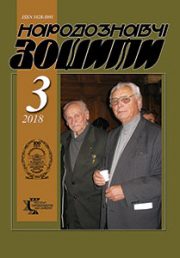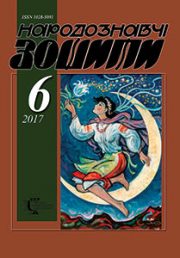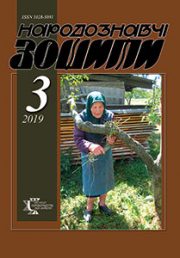The Ethnology Notebooks. 2022. № 6 (168), 1255—1271
UDK [930.2:[711.4:711.559.6]:911.375](477.4-15)”13/14″
DOI https://doi.org/10.15407/nz2022.06.1255
THE FORMATION OF DEFENSIVE COMPLEXES AT POLYDS IN THE 14th—15th CENTURIES: PLANNING AND TIME ASPECTS
TARAS Yaroslav
- ORCID ID: https://orcid.org/0000-0001-7241-9466
- Doctor of Historical Sciences, Professor,
- Lviv Polytechnic National University,
- Department of Architecure and conservation,
- 12 Bandery St., 79013, Lviv, Ukraine,
- Contacts: e-mail: yaroslav.m.taras@lpnu.ua
LYTWYNCHUK Illia
- ORCID ID: https://orcid.org/0000-0002-4635-060X
- master of Architecture,
- Ph. D. student,
- Lviv Polytechnic National University,
- Department of Architecure and conservation,
- 12 Bandery St., 79013, Lviv, Ukraine,
- Contacts: e-mail: illia.v.lytvynchuk@lpnu.ua
Abstract. The primary attention of the article is devoted to the study of urban planning features of the formation of fortified cities of the Podilsky Principality during the reign of the Koriatovichs. The problem of the genesis of Podil cities goes back to the times of the existence of the semi-independent Podil principality of the Koriatovichs, at the time when many of these cities were founded and potentially had common features in the urban planning aspect. Despite the great interest in this region’s medieval history and the history of urban planning, there remains a need for more work devoted to the urban development of Podil cities and their fortifications of defined chronological boundaries. Targeted analysis of the research subject by other authors from the architecture and urban planning field was not conducted. The authors set a goal of summarizing the results of the latest historical and urban studies of the fortified cities of the historical Podillia of the XIV—XV centuries. And based on the analysis of their planning structures, find out the time and features of the formation of urban defense complexes. The authors of the article understand the «urban defense complex» as a set of fortification structures and related spatial planning structures of fortified components of a historic city, such as a castle (a castle, a fort), posts (suburbs), midtowns, suburbs, which work in a single system defense of the city. A list and table of historical Misses of the Principality of Podolsk (representative sample) were compiled based on historical sources. It was decided to divide them into three groups according to the time of establishment — before the Principality of Podilsk, during its existence, and after its termination. After the historical-geographic survey of the cities of Podil, the next stage of the research is architectural and urban planning research, for which the state of preservation of the historical planning structures of the defensive complexes of the cities was determined. The analysis of the preserved urban planning relics was used, which recreated the original planning characteristics of the cities. The typological similarity of the cities of Western and Eastern Podillia (Smotrych and Bratslav) was revealed. The similarity of the planning structures of the cities of the Principality of Podilsk to the cities of Central Europe has been proven. It was found that the cities of each of the three identified groups have similar features in planning their defense complexes (castle and city center).
Keywords: Koriatovichi, Podillia principality, defense complex, urban planning structure.
Received 10.11.2022
REFERENCES
- Plamenyts’ka, O. (1999). About the Podil architectural and urban school from the point of view of historical geography. Theory and history of architecture and urban planning, 4, 145—155 [in Ukrainian].
- Kushtan, D., & Lastovs’kyj, V. (2016). Archeology and early history of Cherkasy. Kyiv; Cherkasy: In-t arkheolohii NAN Ukrainy [in Ukrainian].
- Tsarenko, S. (2005). Town planning evolution of Vinnytsia during the Middle Ages. Modern problems of research, restoration and preservation of cultural heritage, 2, 307—327 [in Ukrainian].
- Rychkov, P. (2016). Notes to urbanist history of Bratislava. Cities and towns of Podillia from the Middle Ages to XX st.: Materials of Scientific konferense 24—25 September 2015 r. (Pp. 314—323) [in Ukrainian].
- Plamenyts’ka, O. (2012). Castrum Camenecensis. Kamianets Fortress: (late antiquity — early modern times).FOP Sysyn O.V. [in Ukrainian].
- Pidstavka, R. (2018). Zamky kniaziv Koriatovychiv na Podilli (na materialakh NZ «Zamky Ternopillia»). Revitalizatsiia spilnoi ukrainsko-polskoi istorichnoi ta kulturnoi spadshchyny: problemy doslidzhennia ta izhnarodnyi dosvid [in Ukrainian].
- Plamenyts’ka, O. (2011). The beginning of Lithuanian rule in Podillya (fortification aspect). Scientific issues of Vinnytsia mykhailo kotsiubynskyistate pedagogical university. Section: pedagogics and psychology [in Ukrainian].
- Rybchynskyi, O., & Kviatkovskyi, L. (2020). Characteristics of the formation of the historical-architectural environment in chervonohorod in the 14th — first half of the 20th century. Fortetsia: zbirnyk zapovidnyka «Tustan’», 4, 492—505 [in Ukrainian].
- Rybchyns’kyj, O. (2005). Yazlivets is a city of renaissance. Independent cultural magazine «Y», 36, 302—309 [in Ukrainian].
- Kaplins’ka, M. (2013). Long markets in the historical cities of Eastern Halychyna. Bulletin of the Lviv Polytechnic National University.Series of Architecture, 757, 302—309 [in Ukrainian].
- Lytvynchuk, I. (2021). Historical and urban research of defense complexes of Vinnitsa of Rus’-Lithuanian era (14th—16th centuries). Current Issues in Research, Conservation and Restoration of Historic Fortifications, 14 (2021), 74—89. Retrieved from: https://doi.org/10.23939/fortifications2020.14.074 [in Ukrainian].
- Lytvynchuk, I. (2020). Hipotetychna rekonstruktsiia istorichnykh fortyfikatsij ta topohrafii smt Medzhybizh u XII-XVIII st. In 30-ta naukova sesiia Naukovoho Tovarystva im. Shevchenka 28 bereznia 2020 r. (Pp. 13—22) [in Ukrainian].
- Cherkes, B., & Lytvynchuk, I. (2020). Spontaneous and regular models of fortified cities of Ukraine in the 16th—17th centuries. Architectural Studies, 6, 1—9. Retrieved from: https://doi.org/10.23939/as2020.01.001.
- Kuchera, M. (1965). Medieval settlement near the village of Sokiltsi on Southern Buza. Arkheolohiia, 19, 201—214 [in Ukrainian].
- Vynohrods’ka, L. (2011). Metalevi vyroby z majsterni kovalia kintsia 14 — pershoi polovyny 15 s. Magisterium, 45, 86—91 [in Ukrainian].
- Vynohrodska, L., Potekhina, I, & Dolzhenko, Yu. (2020). Formation of the Socio-Spatial and Anthropological Structure of Vinnytsia According to Archaeological (the 13—16th Cent.) and Anthropological (the 18—19th Cent.) Materials. History Pages, 51. Retrieved from: https://doi.org/10.20535/2307-5244.51.2020.220174 [in Ukrainian].
- Kushtan, D. (2018). History of Cherkasy castles (XIV—XVIII centuries). Ukraine is on the way to independence (Pp. 20—28) [in Ukrainian].
- Kuza, A. (1996). Ancient Russian settlement of the 10th-13th centuries. Vault of archaeological monuments. Christian publishing house [in Russian].
- Molchanovskyj, N. (1885). An outline of information about the Podolsk land until 1434: (predominantly according to chronicles). Type. Emperor University of St. Vladimir [in Russian].
- Dashkevych, Ya. (2006). Steppe states in Podillja and western black sea area as a problem of the history of Ukraine of XIV century. Materials and studies on archaeology of Sub-Carpathian and Volhynian area, 10, 112—121 [in Ukrainian].
- Biletska, O.V. (2004). Podillia at the turn of the 18th and 19th centuries: to the origins of the formation of the historical region. Odesa: Astroprynt [in Ukrainian].
- Mykhajlovs’kyj, V. (2017). Formation of the historical territory of Podillia in the second half of the 14th century Ukrainian Historical Journal, 3, 67—82 [in Ukrainian].
- Mykhajlovs’kyj, V. (2009). The rule of the Koriatovichs in Podilla (1340—1394): social structure of the princely entourage. Ukrainian Historical Journal, 5 (488), 34—47 [in Ukrainian].
- Mykhajlovs’kyj, V. (2003). Naselenni punkty zakhidnoho Podillia ta Podil’s’koho voievodstva (1402—1444 rr.) u svitli korolivs’kykh, velykokniazivs’kykh ta starostyns’kykh dokumentiv. Istoryko-heohrafichni doslidzhennia v Ukraini (Pp. 212—369) [in Ukrainian].
- Rusyna, O. (2016). Ukrainian aspects of Belarusian-Lithuanian annals. Ukrainian historical magazine, 6, 127—150 [in Ukrainian].
- Bevz, M. (2004). Methodology of identification and verification of different temporal elements of the planning-spatial system of the historical city (on the example of the city of Belza). Series of Architecture, 505, 350—360 [in Ukrainian].
- Bojko, O., & Slobodian, V. (2006). Development and formation of the urban structure of Belza on the basis of cartographic and archival research. Belz and Belz land (Pp. 140—166) [in Ukrainian].
- Dyba, Yu., & Petryk, V. (2002). Planning structure of «regional Lviv». «Princely times» seminar(Pp. 40—59) [in Ukrainian].
- Pohorilets’, O., & Savvov, R. (2004). Regarding the issue of coinage in Podillya in the second half of the 18th century. New researches of the monuments of the Cossack era in Ukraine (Pp. 145—153) [in Ukrainian].
- Vynokur, I., & Horishnij, P. (1994). The capital of ancient Ruthenian Ponizia. Kamianets-Podilskyi Center of Podillia Studies [in Ukrainian].
- Yakubovskyi V.I. (2021). Bolokhivska land of the 12th—13th centuries. History, material culture, economy. Kamianets-Podilskyi [in Ukrainian].
- Polekhov, S. (2014). Chronicle «The Tale of Podolia» (Part 1). Old Russia. The questions of middle ages, 1 (55), 33—42 [in Russian].
- Polekhov, S. (2014b). Chronicle «The Tale of Podolia» (Part 2). Old Russia. The questions of middle ages, 2 (56), 49—62 [in Russian].
- Krykun, M. (2011). Podil Voivodeship in the 17th—18th centuries: Articles and materials [in Ukrainian].
- Mykhajlovs’kyj, V. (2021). History, language, geography: toponyms of medieval Podillia. Tempora [in Ukrainian].
- Mykhajlovs’kyj, V., & Shandra, V. (2011). Povit (Vol. 8: Pa-Pryk). In Electronic Library; Institute of History of UkraineRetrieved from:http://resource.history.org.ua/cgi-bin/eiu/history.exe?&I21DBN=EIU&P21DBN=EIU&S21STN=1&S21REF=10&S21FMT=eiu_all&C21COM=S&S21CNR=20&S21P01=0&S21P02=0&S21P03=TRN=&S21COLORTERMS=0&S21STR=Povit (Last accessed: 1.10.2022) [in Ukrainian].
- Tykhomyrov, M. (1952). List of distant and nearby Russian cities. Historical launch, 40, 214—259 [in Russian].
- Bilets’ka, O. (2005). «Kazus Spytka»: Do istorii vyvchennia seredn’ovichnoho Podillia: Druha polovyna XIV — persha polovyna XV st. Kyivs’ka starovyna: Naukovyj istoryko-filolohichnyj zhurnal, 2, 23—33 [in Ukrainian].
- Polekhov, S. (2014c). «List of towns of Svidrigail». Dating and publication. Old Russia. The questions of middle ages (Pp. 111—125) [in Russian].
- Biletska, O. (2015). Kachybey in the light of the 15th—16th centuries’ sources (materials for the studies of the Podolia and North Black Sea region historical geography). Качибей у світлі джерел XV—XVI століть (матеріали до вивчення історичної географії Поділля та Північного Причорномор’я), 26, 232—258 [in Ukrainian].
- Beletskaya, O.V. (2016). Lighthouse in the 18th—18th centuries (materials for the study of the historical geography of Podil and the Northern Black Sea Region). Zolotordina civilization(Issue 9, pp. 186—196). Kazan [in Russian].
- Biletska, O. (2019). Karaul in the historical sources 15th—16th centuries. Ukraina Lithuanica, 5, 28—52 [in Ukrainian].
- (1905). Matricularum Regni Poloniae summaria: excussis codicibus, qui in Chartophylacio Maximo Varsoviensi asservantur (Vol. 3) [in Polish].
- Borovskyi, A.V. (2018). Revision of privileges on estates in the Podil Voivodeship 1469 y. (Bona regalia onerata in terris Russiae etc. Lustracio 1469). Annals of the Rock. Personal archive of local historian Borovsky A.V. Retrieved from: http://litopys-skaly.blogspot.com/2018/12/1469-bona-regalia-onerata-in-terra.html [in Ukrainian].
- Vynohrods’ka, L. (2005). Archaeological research of the castle in Bratslav, Vinnytsia region in 2003. Mohilian Readings’ 2004(Pp. 143—152) [in Ukrainian].
- Hedz T. (2011) To the question of the existence and localization of «steppe» Zvenigorod. Retrieved from: https://www.myslenedrevo.com.ua/uk/Sci/AuxHistSci/HistGeography/Zvenygorod.html [in Ukrainian].
- Vynokur, I., & Petrov, M. (1999). About the founding time of Kamianets-Podilskyi: a debatable aspect. local history, 1—4, 10—24 [in Ukrainian].
- Tsarenko, S. (2015). City of Vinnytsia: Historical guide-guide on architectural heritage (draft for popular edition Part I 2015). Retrieved from: calameo.com; https://ru.calameo.com/books/004798737901a1f806d3c [in Ukrainian].
- Mal’chenko, O. (2001). Ukripleni poselennia Bratslavs’koho, Kyivs’koho i Podil’s’koho voievodstv XV — seredyna XVII stolit’. NAN Ukrainy, In-t ukr. arkheohrafii ta dzhereloznavstva im. M.S. Hrushev [in Ukrainian].
- Nahnybida, R., & Lytvynchuk, I. (2020). Formation of defensive fortifications of the chronicle Plav (Zhvanets) in the 12th—18th centuries. Current Issues in Research, Conservation and Restoration of Historic Fortifications, 12, 178—195 [in Ukrainian].
- Lytvynchuk, I., & Rybchyns’kyj, O. (2021). Urbanistychnyj oboronnyj kompleks mista Bar (Riv) u XV—XVIII st. sproba hipotetychnoi rekonstruktsii na pidstavi nevidomoho planu 1821 roku. Zbirnyk materialiv «Arkheolohiia & Fortyfikatsiia Ukrainy Kh Vseukrains’koi z mizhnarodnoiu uchastiu naukovo-praktychnoi konferentsii Kam’ianets’-Podil’s’koho derzhavnoho istorychnoho muzeiu-zapovidnyka, prysviachenoi 90-richchia vid dnia narodzhennia Iona Srul’ovycha Vynokura (1930—2006) (Pp. 188—197) [in Ukrainian].
- Rozov, V. (1928). Ukrainian letters (Vol. 1: 18th century and the first half of the 18th century). Historical and Philological Department of the Ukrainian Academy of Sciences [in Ukrainian].
- Hedz’, T. (2012). Sokolet parish and surrounding lands in 1391. Thought tree Retrieved from: https://www.myslenedrevo.com.ua/uk/Sci/AuxHistSci/HistGeography/SokileckaVolost.html (Last accessed: 1.10.2022) [in Ukrainian].
- Kozyr, I., & Pozyvaj, T. (2010). Researches of the medieval complex of Torgovitsa in 2008—2009. Archaeological researches in Ukraine: 2009 [in Ukrainian].
- (1980). Complete collection of Russian chronicles (Vol. 35: Slutskaya (Uvarovskaya) chronicle) [in Russian].
- (1907). Spysok Bykhovtsa. In The complete collection of Russian chronicles (Vol. 17:Western Russian chronicles) [in Russian].
- Yavorovskyj, N. (Ed.). (1895). Works of the Podolsk Diocesan Historical and Statistical Committee (Vol. 7). Typ. Pod. hub. pravl. [in Russian].
- Book of entries for the sub-chancellorship of Jan son of Lutek from Brzezie. AGAD. MK. Sygn. 11. P. 10. Варшава [in Polish].
- The book of entries for the sub-chancellorship of Jan Borukowski, contains entries of documents. AGAD. MK. Sygn. 122. F. 141—142. Варшава [in Polish].
- Borovs’kyj, A. (2019). Two documents about the village of Shipivtsi. Annals of Skala Personal archive of local historian Borovsky A.V. Retrieved from: http://litopys-skaly.blogspot.com/2019/02/blog-post_2.html (Last accessed: 1.10.2022) [in Ukrainian].
- Ksiega wpisow za kanclerstwa Jana Zamoyskiego, zawiera wpisy dokumentow. AGAD. MK. Sygn. 123. F. 728v-730. Варшава [in Polish].
- Gorczaka, B. (1887). Archiwum ksiazat Lubartowiczow Sanguszkуw w Slawucie (Vol. 1). 1366—1506. Lwow [in Polish].
- Myshanych, O. (Ed.). (1989). Russian chronicle according to the Ipatsky list Dnipro [in Ukrainian].
- (1887). Town and land records from the times of the Republic of Poland from the so-called Bernardine archive in Lviv as a result of the late Count Aleksander Stadnicki’s foundation (Vol. 12). ed. thanks to the efforts of the Galician National Department [in Polish].
- Lewicki, A. (Ed.). (1891). Codex epistolaris saeculi decimi quinti (Vol. 2). 1382—1445. Drukarnia «Czasu» [in Polish].
- (1905). Malopolska Diplomatic Code (Vol. 4). 1386—1450. Academy Skills [in Polish].
- (1894). Materialy dlja istorii mestnogo upravlenija v svjazi s istoriej soslovnoj organizacii. Akty Barskogo starostva XVII—XVIII v. In Arhiv Jugo-Zapadnoj Rossii, izdavaemyj Vremennoj komissiej dlja razbora drevnih aktov, vysochajshe uchrezhdennoj pri Kievskom voennom, Podol’skom i Volynskom general-gubernatore (Vol. 2) [in Russian].
- Kurtyka, J. (2001). The oldest documents for the Franciscans of Kamieniec from the years 1400—1402. Historical Annals, 67, 149—168 [in Polish].
- Karczewski, D. (2012). Franciscans in the monarchy of the Piasts and Jagellons in the Middle Ages. Establishment-development-internal organization. Avalon [in Polish].
- (1908). Full sobranye russkykh letopysej (Vol. 2: Ypat’evskaia letopys’). Retrieved from:http://litopys.org.ua/ipatlet/ipat16.htm [in Russian].
- Danilowicz, I. (Ed.). (1860).Treasury of papal, imperial, royal and ducal diplomats; national resolutions, resolutions of various authorities and offices used to critically explain the history of Lithuania, Lithuanian Ruthenia and their neighboring countries (Vol. 1). Wilno: W drukarni A.H. Kirkora i sp. [in Polish].
- Solov’ev, S. (1851). History of the old Russian ages (Vol. 2) [in Russian].
- Hrushevs’kyj, M., & Sokhan’, P. (Ed.). (2005). Materials for the history of socio-political and economic relations in Western Ukraine. Series one (Part 1—80) (1361—1530). Lviv: Svit [in Ukrainian].
- (1968). Vitoldiana: Codex privilegiorum Vitoldi Magni ducis Lithuaniae 1386—1430 (History Series). Polish Academy of Sciences [in Polish].
- Bunyn, A. (1979). City streets. Architecture and urban planning. Retrieved from: http://townevolution.ru/books/item/f00/s00/z0000021/st013.shtml (Last accessed: 1.10.2022) [in Russian].
- Polischuk, M. (2002). Architectural and spatial organization of Jewish town-planning complexes XV — beginning 20th century in the structure of historical settlements of Podillia. Unpublished thesis … candidate architect.: 18.00.01 [in Ukrainian].
- Nahnybida, R. (2004). Depiction of the historical and planning structure of the town of Smotrycha in the XV—XVIII centuries. on the plan of the first half of the 19th century. In the materials of the 14th Podilskyi scientific historical and local history conference (dedicated to the 200th anniversary of the birth of T.G. Shevchenko, the 70th anniversary of the liberation of Khmelnytskyi region from the Nazi occupiers, the 50th anniversary of the formation of Khmelnytskyi). historical and local history society)(Pp. 130—139). FOP Sysyn O.V. [in Ukrainian].
- Rybchynskyi, O. (2021). Unsuccessful towns of the bar surroundings: Yaltushkiv, Mezhyriv, Porosiatkiv, Marianivka, Barok and Berlyntsi. Current Issues in Research, Conservation and Restoration of Historic Fortifications, 14, 122—131. Retrieved from: https://doi.org/10.23939/fortifications2020.14.122 [in Ukrainian].







